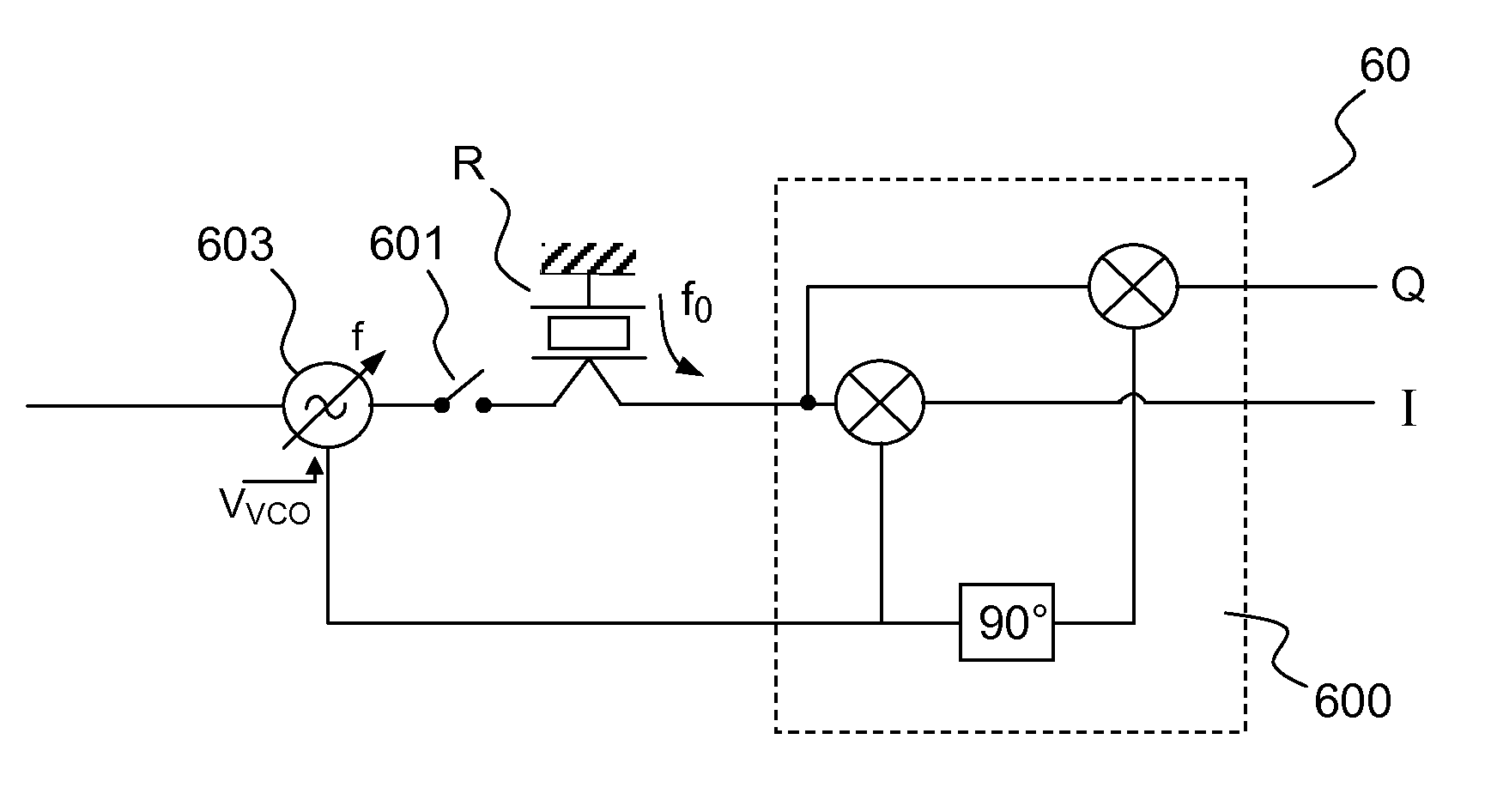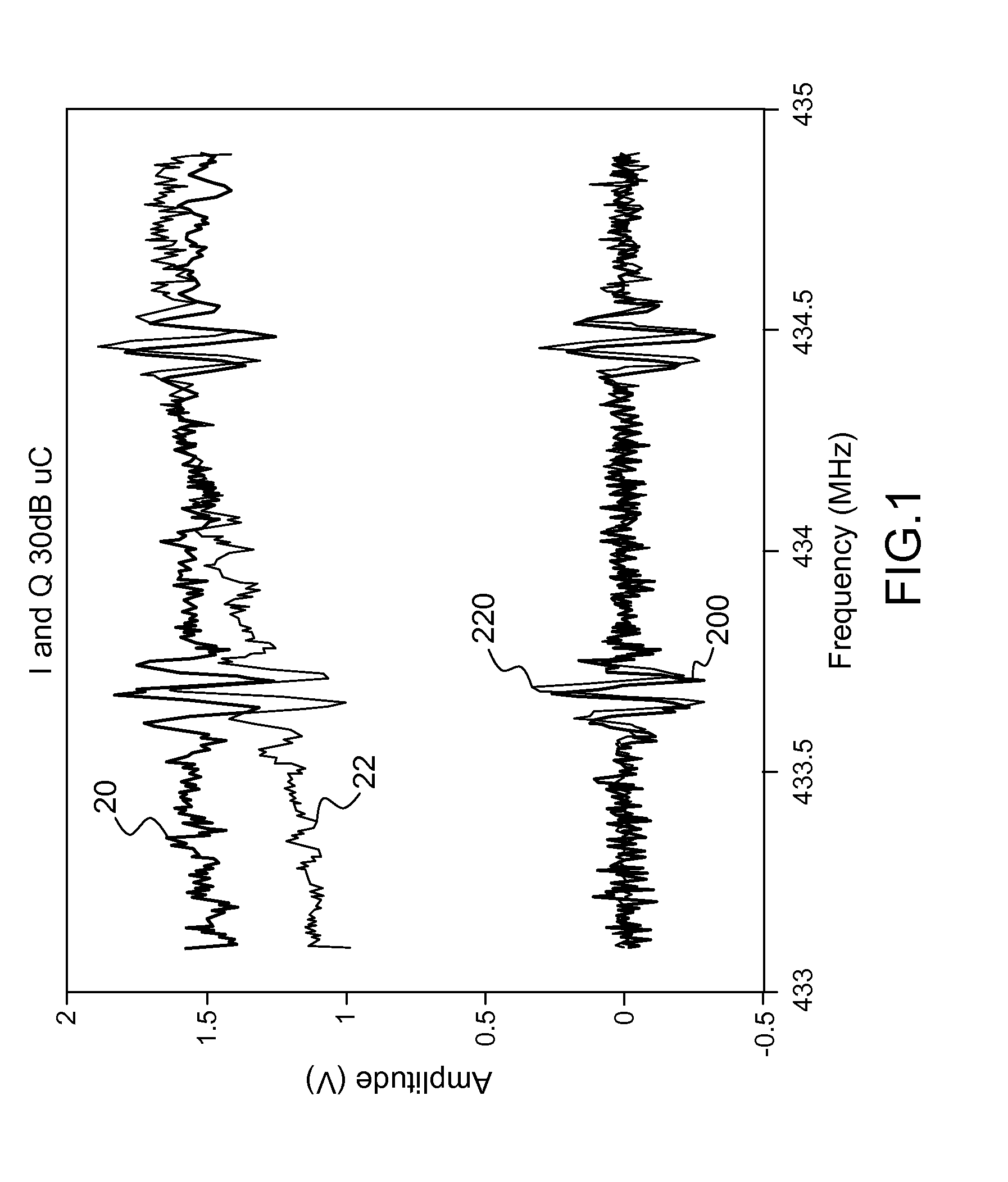Method of Interrogation of a Differential Sensor of Acoustic Type Having Two Resonances and Device Implementing the Method of Interrogation
a differential sensor and acoustic type technology, applied in the direction of thermometers, instruments, instruments, etc., can solve the drawback of requiring wide-band power detectors, relative low passband, and high noise, so as to eliminate the high frequency of the signal mixed and the effect of reducing the high frequency
- Summary
- Abstract
- Description
- Claims
- Application Information
AI Technical Summary
Benefits of technology
Problems solved by technology
Method used
Image
Examples
first embodiment
[0044]According to the invention, it is possible to determine the difference between the two natural resonant frequencies f1 and f2 by splitting the frequency domain in two sub-bands: a first frequency sub-band containing at least the natural resonant frequency f1 of the first resonator, and a second frequency sub-band containing at least the natural resonant frequency f2 of the second resonator. The two sub-bands may be chosen so that the characteristics of the level of the mixed and filtered signal are similar in the two sub-bands. The closer the quality factors exhibited by the two resonators forming the differential sensor, the greater the similarity of the spectral responses, a feature generally sought by designers of a differential sensor.
[0045]An estimator of the similarity between the characteristics of the level of the mixed and filtered signal in the two sub-bands may be formed by the cross-correlation coefficient defined by the following relation:
Xcorr(t)=∑k=-MMs1(k)s2(k-...
second embodiment
[0069]It should be noted that the example illustrated by FIG. 4 pertains to an interrogation method according to the first aforementioned embodiment, in which the variable frequency is varied in two distinct frequency sub-bands. In the case of the second embodiment described above, the frequency can be varied only in a single frequency band, in which case a single signal s(f) can be extracted during a single gathering step, not represented in the figure.
[0070]The second gathering step 403 can then be followed by a step 405 of calculating the correlation product of the signals s1(f) and s2(f). It should be noted that in the calculation step 405, in a similar manner the auto-correlation of the single signal s(f) can be calculated, in the case of the second embodiment described above.
[0071]On completion of the calculation step 405, it is possible to determine, by appropriate calculation means, the maximum value of the correlation product or of the auto-correlation, and to directly dedu...
PUM
 Login to View More
Login to View More Abstract
Description
Claims
Application Information
 Login to View More
Login to View More - R&D
- Intellectual Property
- Life Sciences
- Materials
- Tech Scout
- Unparalleled Data Quality
- Higher Quality Content
- 60% Fewer Hallucinations
Browse by: Latest US Patents, China's latest patents, Technical Efficacy Thesaurus, Application Domain, Technology Topic, Popular Technical Reports.
© 2025 PatSnap. All rights reserved.Legal|Privacy policy|Modern Slavery Act Transparency Statement|Sitemap|About US| Contact US: help@patsnap.com



